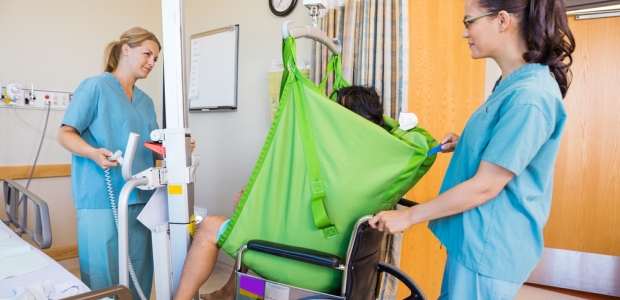
DOL Proposes Change in HO 7 on Patient Lifts
The NPRM points out that some members of Congress have sought this change for several years, contending that the current HO 7 discourages health care employers in their states from employing 16- and 17-year-olds, which deprives the teens of training opportunities and causes staff shortages in health facilities, particularly those located in rural areas.
Citing more than 1.1 million jobs currently open in health care and social assistance, the U.S. Department of Labor has issued a Notice of Proposed Rulemaking to revise its Hazardous Occupations Order 7 (HO 7), which prohibits 16- and 17-year-olds from working in jobs that involve the operation of power-driven patient lifts. The NRPM proposes to allow them to do those jobs.
The agency's announcement said this will allow younger Americans to safely develop critical skills for fast-growing jobs in health care – which is expected to add 2.4 million jobs, more than any other occupation, through 2026.
"A regulation that took effect in 2010 treats healthcare patient lifts on par with construction equipment like backhoes, cranes, and other industrial equipment with respect to youth employment," the agency noted.
The NPRM points out that some members of Congress have sought this change for several years, contending that the current HO 7 discourages health care employers in their states from employing 16- and 17-year-olds, which deprives the teens of training opportunities and causes staff shortages in health facilities, particularly those located in rural areas.
The NPRM stresses that power-assisted patient lifts are far safer than the other types of equipment that DOL regulations bar 16- and 17-year-olds from operating. "From 2102 to 2016 only 1 worker fatality was attributed to a patient hoist or lifting harness, in comparison to 930 worker fatalities associated with cranes, overhead hoists, bucket or basket hoists, manlifts, and forklifts," it says.
The proposed rule is expected to be an Executive Order 13771 deregulatory action, meaning it is an action taken in response to the order signed by President Donald J. Trump on Jan. 30, 2017, that directed agencies to repeal two regulations for every new regulation they promulgate.
DOL is accepting comments on the proposed rule for 60 days. To comment, visit www.regulations.gov and search for RIN 1235-AA22.